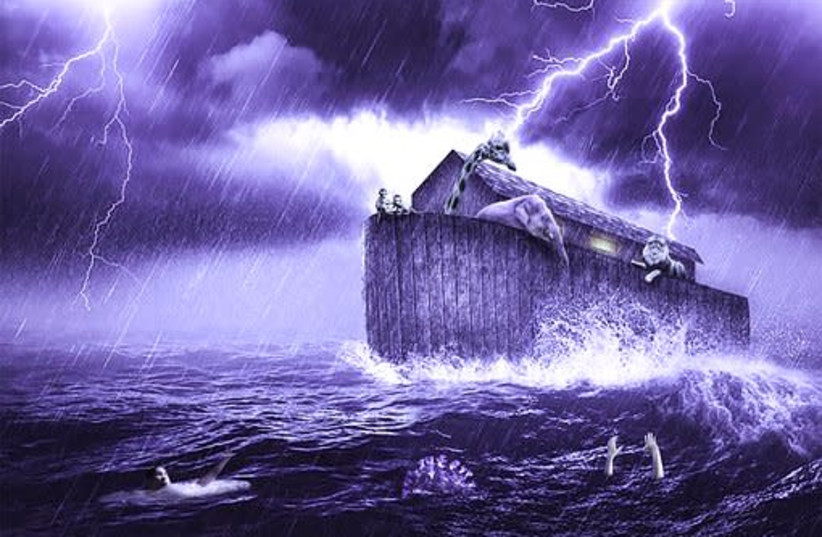Moreover, some of the laws which are in the Code of Hammurabi, such as “an eye for an eye,” are also included in the Torah. This law code, named for the ruler of the Babylonian Empire, was written circa 1750 BCE. There are also references in the Torah to Hittite laws (the Code of the Neshilim) written around 1650-1500 BCE; the Code of Assyrian laws, 1450-1250 BCE; and Sumarian texts written around 2400 BCE. Other ancient sources depict the creation of the world and the origin of human beings.
In the Gilgamesh epic, a man is created from the earth by God and lives among the animals. A woman is created from his rib and tempts the man with forbidden fruit offered by a snake, who promises immortality; they become aware of their nakedness (being humans) and are forced to leave the Garden of Eternity. There is also a story of a catastrophic flood and a survivor who builds an ark, releases a dove and a raven to know if the water had subsided, and survives to continue humanity. There are also similarities to advice in Ecclesiastes. So, why are these stories and law codes included in the Torah, and how are they different?
The Torah creates a new paradigm which is based on ethical monotheism, the belief in one God, and a system of ethics and morality – Judaism. The stories are changed in the Torah to demonstrate that humans have a higher purpose which differentiates them from animals. In the Gilgamesh epic, the world is chaotic, filled with demons, monsters and natural disasters. The Torah provides a perspective and theology based on the belief in one God who creates order and gives meaning to existence.
The Gilgamesh story ends with existential fear and trembling, confusion and loneliness; the Noah story ends with The Covenant and hope, symbolized by the rainbow. This was not only a theological breakthrough but a historic one as well. And the Torah reflects these changes in a historical context.
At the end of the first chapter of Genesis (4:23), we read about Tubal-Cain, someone who worked with copper and iron and made weapons of war (a “sharpener”). Since there is nothing holy about him or what he did, why is he mentioned in the Torah? Perhaps because when the Torah was composed and given by Moses to the Jewish people, the world was going through a revolution – the transition from the Bronze Age (named for the amalgam of copper and tin which created a stronger metal) to the Iron Age, which produced an even stronger metal than bronze, a technology that was critical in wars. The reference to Tubal-Cain, therefore, is not about a person but a historic change; he is a metaphor for what was happening in the world, and the Torah is aware of its significance.
Another historic change occurred around the time that the Jews escaped from Egypt, or shortly thereafter. According to Prof. Eric Cline, in his fascinating book 1177 BC, the Year Civilization Collapsed, all the empires and civilizations were greatly affected, and some came to an end. Many factors caused this catastrophe, such as long periods of drought, earthquakes, and especially marauding groups, known as the Sea People, who attacked ships, thereby destroying the trade routes. This had a devastating impact on what had been a flourishing regional economy. The Sea People, called Plishtim, or Philistines – the word means “invaders” – occupied parts of Eretz Yisrael/Canaan, later called Palestine, a reference to the Philistines. They were defeated by King David.
Using stories that people knew and accepted, but changing them to offer a new perspective – ethical monotheism – was not only intended for the Jewish people. This was also the basis for Noahide Laws and for building a Jewish civilization, including the Temple in Jerusalem, which was accessible to non-Jews as well. The goal was tikkun olam, creating a world that reflected God’s will and our path to serve Him. ■
The author is a historian and writer.

